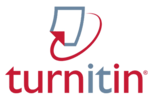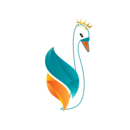Bibliometric Analysis of Social Studies Learning Models in Elementary Schools from 2014 to 2024
Abstract
Purpose of the study: This study aims to map and analyze publication trends related to Social Studies (IPS) learning models at the elementary school level using bibliometric data from the Scopus database covering the period 2014–2024.
Methodology: This study employs a qualitative bibliometric method with four stages: Identification, Screening, Eligibility, and Inclusion. Data were retrieved from the Scopus database using the keywords TITLE-ABS-KEY(“social sciences”) AND TITLE-ABS-KEY(“learning model”) AND TITLE-ABS-KEY(“primary school”). Analysis tools used include Microsoft Excel and VOSviewer version 1.6.19.
Main Findings: Publication trends fluctuate over the years with an increase in 2024. Scientific articles are the dominant document type (73.3%), and social sciences are the most frequently studied field (53.6%). Spain ranks first in publication and citation counts. Keyword co-occurrence analysis reveals “curriculum,” “education,” and “social sciences” as the most connected terms.
Novelty/Originality of this study: This study provides the first bibliometric mapping of a global study on social studies learning models at the elementary level using Scopus data. This study advances new insights on understanding through publication trend patterns by identifying so as to support future policymaking, curriculum planning, and research direction in primary education. This study is used to recommend the development of social studies learning models that are relevant to 21st-century needs, such as the integration of digital literacy, collaboration, and project-based learning.
References
E. Yusnaldi et al., “Dimensi dan struktur IPS [Dimensions and structure of social studies],” J. Educ., vol. 6, no. 4, 2024, doi: 10.31004/joe.v6i4.6403.
T. Ulfa and E. Munastiwi, “Keterampilan berpikir kritis dalam pembelajaran ilmu pengetahuan sosial [Critical thinking skills in social science learning],” Journal of Education, Humaniora and Social Sciences (JEHSS), vol 4, no. 1, pp. 50-54, 2021, doi: 10.34007/jehss.v4i1.576.
I. T. Jadidah, S. Sartika, S. Putri, N. Maharani, and T. A. M. Sari, “Konsep ilmu, teknologi, dan masyarakat dalam IPS [The concept of science, technology, and society in social studies],” J. Contemp. Issues Prim. Educ., vol. 1, no. 2, 2023, doi: 10.61476/9yaedt50.
U. N. Bima, “Tren penelitian pembelajatan IPS di sekolah dasar berdasarkan database scopus dari tahun 2013 higga 2022: Analisis bibliometrik [Research trends in social studies learning in elementary schools based on the scopus database from 2013 to 2022: A bibliometric analysis],” Unpubl. Manuscr. Local J., vol. 7, pp. 277–291, 2023.
N. N. Rodríguez and K. Swalwell, Social Studies for a Better World: An Anti-Oppressive Approach for Elementary Educators. Taylor & Francis, 2023. doi: 10.4324/9781032677941/SOCIAL-STUDIES-BETTER-WORLD-NOREEN-NASEEM-RODRIGUEZ-KATY-SWALWELL/ACCESSIBILITY-INFORMATION.
A. Ollinheimo and K. Hakkarainen, “Critical thinking as cooperation and its relation to mental health and social welfare,” New Ideas Psychol., vol. 68, 2023, doi: 10.1016/j.newideapsych.2022.100988.
B. Tadić, M. M. Dankulov, and R. Melnik, “Mechanisms of self-organized criticality in social processes of knowledge creation.,” Phys. Rev. E, vol. 96 3–1, p. 032307, 2017, doi: 10.1103/PhysRevE.96.032307.
S. M. M. Loyens, J. E. van Meerten, L. Schaap, and L. Wijnia, “Situating Higher-Order, Critical, and Critical-Analytic Thinking in Problem- and Project-Based Learning Environments: A Systematic Review,” Educ. Psychol. Rev., vol. 35, pp. 1–44, 2023, doi: 10.1007/s10648-023-09757-x.
R. Mensah, E. Swanzy-Impraim, D.-C. Marfo, and P. A. Babah, “Incorporation of community resources in teaching social studies in junior high schools: A case in the adentan district of the greater accra region of Ghana,” Cogent Educ., vol. 10, 2023, doi: 10.1080/2331186X.2023.2206337.
A. Musa, “Availability, utilization, and efficiency of community resources in teaching social studies for knowledge transfer in federal capital territory college of education, Zuba-Abuja.,” Int. J. Res. Innov. Appl. Sci., vol. 9, no. 4, pp. 234-244, 2024, doi: 10.51584/ijrias.2024.904016.
W. Phinla, W. Phinla, and N. Mahapoonyanont, “An integrated social studies teaching model based on problem-based and community-based learning to foster 21st century competencies in small primary schools,” Int. J. Innov. Res. Sci. Stud., vol. 8, no. 3, 2025, doi: 10.53894/ijirss.v8i3.6555.
Y. Sulistyosari, H. Sultan, H. M. Karwur, and M. E. Korompis, “The relevance of social studies education in the independent curriculum to the thoughts of Ki Hadjar Dewantara,” Tech. Soc. Sci. J., vol. 49, no. 1, 2023, doi: 10.47577/tssj.v49i1.9792.
A. R. Balqis et al., “Ilmu pengetahuan sosial sebagai transmisi kewarganegaraan [Social sciences as a transmission of citizenship],” Sos. J. Ilm. Pendidik. IPS, vol. 2, no. 2, 2024, doi: 10.62383/sosial.v2i2.229.
A. Jareh, “Sustainable social innovation as a solution for systemic change and resilience,” Sustainability, 2025, doi: 10.3390/su17041583.
M. da Silva-Jean and J. M. Kneippb, “‘Social learning, innovation, and sustainability: The search for directions beyond a systematic literature review,’” Heliyon, vol. 10, 2024, doi: 10.1016/j.heliyon.2024.e28431.
D. Anggraeni, B. Prahani, N. Suprapto, N. Shofiyah, and B. Jatmiko, “Systematic review of problem based learning research in fostering critical thinking skills,” Think. Ski. Creat., vol. 49, 2023, doi: 10.1016/j.tsc.2023.101334.
R. P. Putera et al., “Problem solving method in improving students’ critical thinking abilities in social studies learning,” Int. J. Educ. Res., vol. 1, no. 3, 2024, doi: 10.62951/ijer.v1i3.41.
A. Suprijono, E. Abbas, and Riyadi, “Metacognition and cooperative learning based on deliberative democracy moderated by learning style toward critical thinking skill in social studies learning,” Cogent Educ., vol. 12, no. 1, 2025, doi: 10.1080/2331186x.2025.2458915.
M. Rafii, D. P. Sari, and M. Munawaroh, “Social and cultural basis in education,” FORUM Paedagog., vol. 13, no 1, 2022, doi: 10.24952/paedagogik.v13i1.5254.
S. Eguz, “Adequacy of the social studies curriculum in terms of cultural literacy skills,” Eurasia Proc. Educ. Soc. Sci., vol. 23, 2021, doi: 10.55549/epess.1071439.
O. R. Crisolo, S. Camposano, and D. V. Rogayan, “Relevance of social studies in the 21st century society: Students perspectives,” Int. J. Didact. Stud., 2021, doi: 10.33902/IJODS.2021169729.
S. Abdelwahab et al., “Bibliometric analysis: A few suggestions (Part Two).,” Curr. Probl. Cardiol., p. 102982, 2025, doi: 10.1016/j.cpcardiol.2025.102982.
N. Donthu, S. Kumar, D. Mukherjee, N. Pandey, and W. M. Lim, “How to conduct a bibliometric analysis: An overview and guidelines,” J. Bus. Res., vol. 133, pp. 285–296, 2021, doi: 10.1016/J.JBUSRES.2021.04.070.
W. Hassan and A. E. Duarte, “Bibliometric Analysis: A Few Suggestions.,” Curr. Probl. Cardiol., p. 102640, 2024, doi: 10.1016/j.cpcardiol.2024.102640.
O. Öztürk, R. Kocaman, and D. K. Kanbach, “How to design bibliometric research: an overview and a framework proposal,” Rev. Manag. Sci., vol. 18, no. 1, pp. 3333-3361, 2024, doi: 10.1007/s11846-024-00738-0.
S. Greener, “Evaluating literature with bibliometrics,” Interact. Learn. Environ., vol. 30, pp. 1168–1169, 2022, doi: 10.1080/10494820.2022.2118463.
O. Oliveira, F. F. da Silva, F. Juliani, L. C. Barbosa, and T. Nunhes, “Bibliometric method for mapping the state-of-the-art and identifying research gaps and trends in literature: An essential instrument to support the development of scientific projects,” Scientometr. Recent Adv., 2019, doi: 10.5772/intechopen.85856.
W. Hassan and A. E. Duarte, “Bibliometric analysis: A few suggestions,” Curr. Probl. Cardiol., vol. 49, no. 8, p. 102640, 2024, doi: 10.1016/j.cpcardiol.2024.102640.
S. Uge, A. Neolaka, and M. Yasin, “Development of social studies learning model based on local wisdom in improving students’ knowledge and social attitude,” Int. J. Instr., vol. 12, no. 3, 2019, doi: 10.29333/IJI.2019.12323A.
K. J. Wilson, T. Long, J. L. Momsen, and E. B. Speth, “Modeling in the classroom: Making relationships and systems visible,” CBE Life Sci. Educ., vol. 19, 2020, doi: 10.1187/cbe.19-11-0255.
D. Moher, A. Liberati, J. Tetzlaff, D. G. Altman, and the PRISMA group, “Preferred reporting items for systematic reviews and Meta-Analyses: The PRISMA statement,” PLoS Med., vol. 6, no. 7, p. e1000097, Jul. 2009, doi: 10.1371/journal.pmed.1000097.
M. J. Page et al., “The PRISMA 2020 statement: an updated guideline for reporting systematic reviews,” BMJ, p. n71, Mar. 2021, doi: 10.1136/bmj.n71.
J. Baas, M. Schotten, A. Plume, G. Côté, and R. Karimi, “Scopus as a curated, high-quality bibliometric data source for academic research in quantitative science studies,” Quant. Sci. Stud., vol. 1, pp. 377–386, 2020, doi: 10.1162/qss_a_00019.
M. Schotten, M. Aisati, W. Meester, S. Steiginga, and C. A. Ross, “A brief history of scopus: The world’s largest abstract and citation database of scientific literature,” pp. 31–58, 2017, doi: 10.1201/9781315155890-3.
M. Thelwall and P. Sud, “Scopus 1900–2020: Growth in articles, abstracts, countries, fields, and journals,” Quant. Sci. Stud., vol. 3, pp. 37–50, 2022, doi: 10.1162/qss_a_00177.
J. Baas, M. Schotten, A. Plume, G. Côté, and R. Karimi, “Scopus as a curated, high-quality bibliometric data source for academic research in quantitative science studies,” Quant. Sci. Stud., vol. 1, pp. 377–386, 2020, doi: 10.1162/qss_a_00019.
V. Singh, P. Singh, M. Karmakar, J. Leta, and P. Mayr, “The journal coverage of Web of Science, Scopus and Dimensions: A comparative analysis,” Scientometrics, vol. 126, pp. 5113–5142, 2020, doi: 10.1007/s11192-021-03948-5.
M. Thelwall and P. Sud, “Scopus 1900–2020: Growth in articles, abstracts, countries, fields, and journals,” Quant. Sci. Stud., vol. 3, pp. 37–50, 2022, doi: 10.1162/qss_a_00177.
Y. Mokhnacheva and V. Tsvetkova, “The role and impact of document types in the world and Russian publication arrays based on WoS CC and Scopus,” Sci. Tech. Libr., vol. 8, 2022, doi: 10.33186/1027-3689-2022-8-37-59.
A. Martín-Martín, M. Thelwall, E. Orduna-Malea, and E. Delgado López-Cózar, “Google Scholar, Microsoft Academic, Scopus, Dimensions, Web of Science, and OpenCitations’ COCI: a multidisciplinary comparison of coverage via citations,” Scientometrics, vol. 126, no. 1, pp. 871–906, 2021, doi: 10.1007/s11192-020-03690-4.
M. Hanna, “Ethics of Scientific Writing,” Write Better Med. Pap., 2019, doi: 10.1007/978-3-030-02955-5_21.
Ş. S. Anagün, “Teachers’ perceptions about the relationship between 21st century skills and managing constructivist learning environments,” Int. J. Instr., vol. 11, no. 4, pp. 825–840, 2018.
M. K. Budhathoki, “Writing better research articles for publication,” Cognition, vol. 5, no. 1, 2023, doi: 10.3126/cognition.v5i1.55411.
E. U. Haruna, W. K. Asiedu, and Y. J. Baek, “Mapping the research trends on technological innovation in east asia: A bibliometric analysis using the scopus database for future research direction (1982-2022),” J. Scientometr. Res., vol. 13, no. 3, 2025, doi: 10.5530/jscires.20041153.
R. Ramos, P. Rita, and C. Vong, “Mapping research in marketing: trends, influential papers and agenda for future research,” Span. J. Mark. - ESIC, vol. 28, no. 2, 2023, doi: 10.1108/sjme-10-2022-0221.
S. Nurjanah, J. Sultan, N. A. Martaputri, S. Aisyah, and D. S. F. Seran, “Mapping the trends of inclusive education research based on Scopus database: 2019-2024,” Proceeding Int. Conf. Spec. Educ. South East Asia Reg., 2024, doi: 10.57142/picsar.v3i1.460.
E. Kurniasih and L. P. Hartanti, “The implementation of creative learning models in teaching writing in junior high school,” New Lang. Dimens., 2020, doi: 10.26740/J.V1N1.P10-21.
Y. Kang, “A design on teaching and learning method for creative talent in the fourth industrial revolution,” J-Inst., 2020, doi: 10.22471/disaster.2020.5.1.01.
H. N. Perera et al., “Relations of science teaching self-efficacy with instructional practices, student achievement and support, and teacher job satisfaction,” Contemp. Educ. Psychol., p. 102041, 2021, doi: 10.1016/j.cedpsych.2021.102041.
C. Rosé, E. Mclaughlin, R. Liu, and K. Koedinger, “Explanatory learner models: Why machine learning (alone) is not the answer,” Br J Educ Technol, vol. 50, pp. 2943–2958, 2019, doi: 10.1111/BJET.12858.
E. Dessie, D. Gebeyehu, and F. Eshetu, “Enhancing critical thinking, metacognition, and conceptual understanding in introductory physics: The impact of direct and experiential instructional models,” Eurasia J. Math. Sci. Technol. Educ., 2023, doi: 10.29333/ejmste/13273.
S. Naharin, H. Mubarok, and D. M. Anggraini, “Improving understanding of mathematical concepts through direct learning models for elementary school students,” Syekh Nurjati Int. Conf. Elem. Educ., 2023, doi: 10.24235/sicee.v1i0.14677.
Copyright (c) 2025 Dimas Satrio Wibowo, Muhroji Muhroji

This work is licensed under a Creative Commons Attribution 4.0 International License.
Authors who publish with this journal agree to the following terms:
- Authors retain copyright and acknowledge that the Integrated Science Education Journal is the first publisher licensed under a Creative Commons Attribution 4.0 International License.
- Authors are able to enter into separate, additional contractual arrangements for the non-exclusive distribution of the journal's published version of the work (e.g., post it to an institutional repository or publish it in a book), with an acknowledgment of its initial publication in this journal.
- Authors are permitted and encouraged to post their work online (e.g., in institutional repositories or on their website) prior to and during the submission process, as it can lead to productive exchanges and earlier and greater citation of published work.








.png)
.png)





